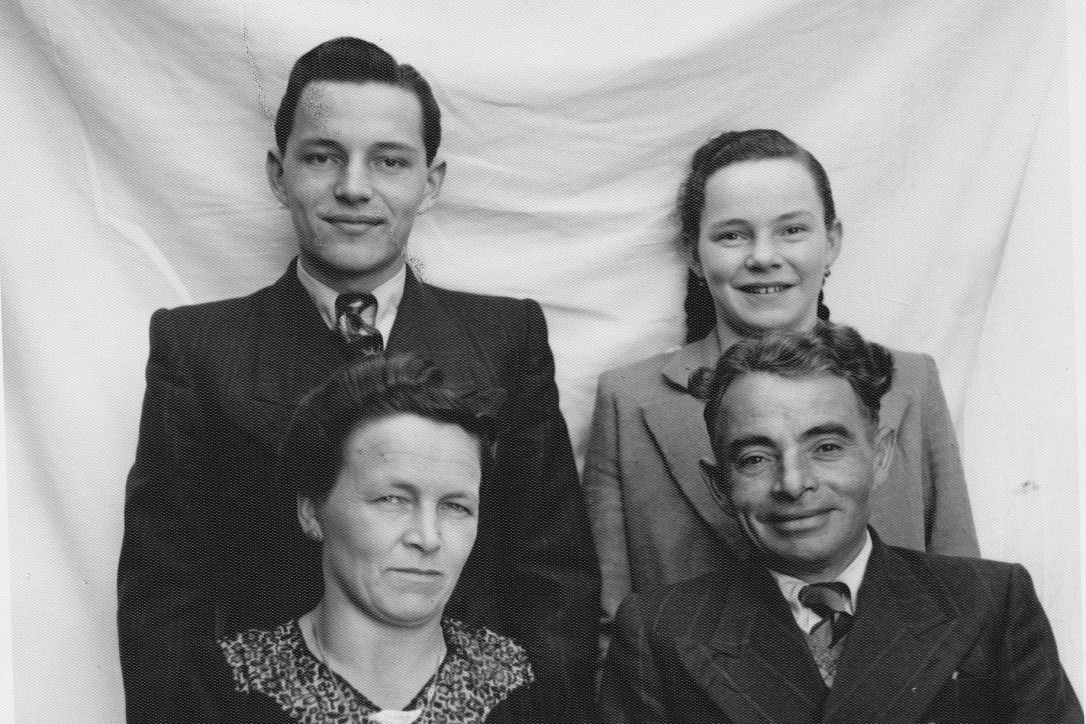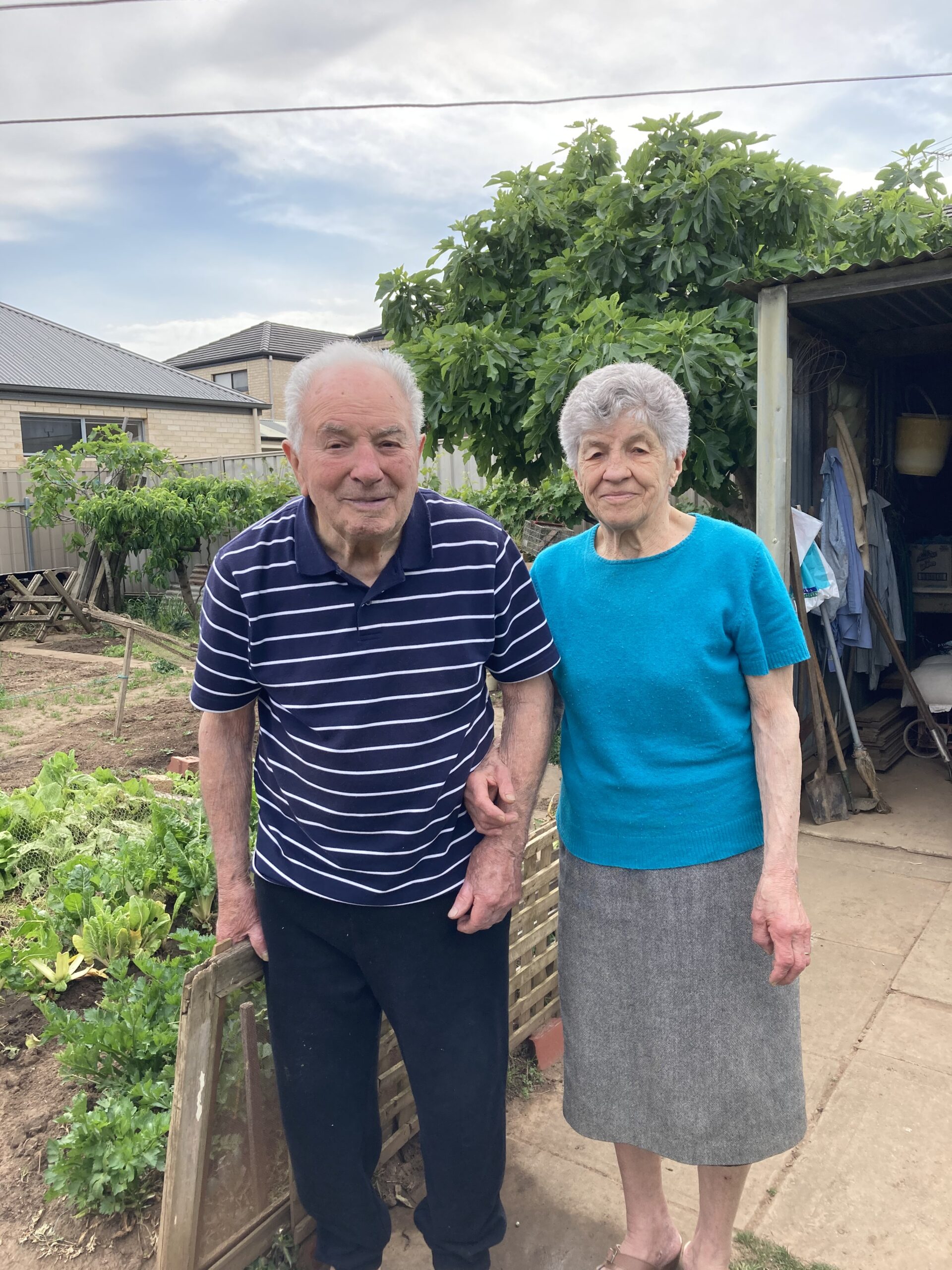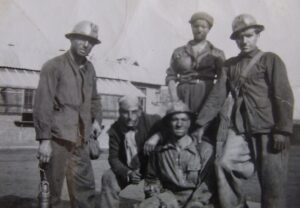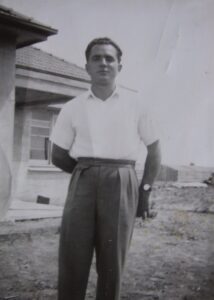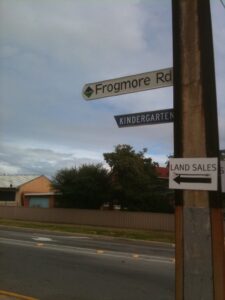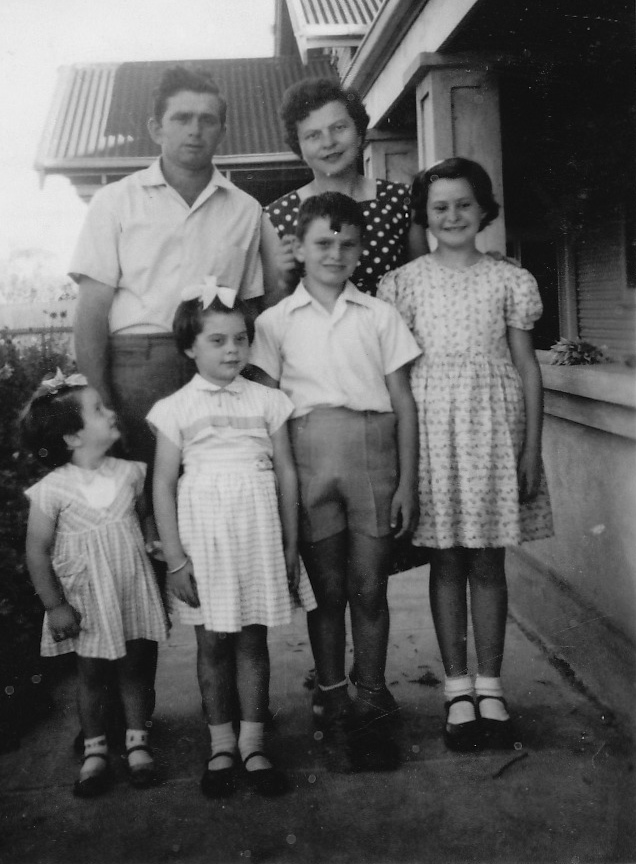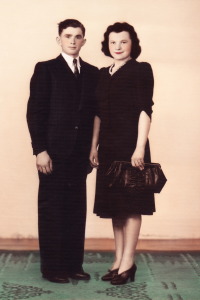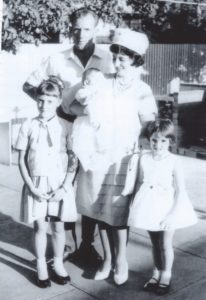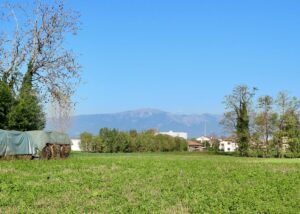Johnny Tormena was born on 29th November 1927 at Bigolino in the province of Treviso. His sister, Maria Rosa was also born at Bigolino on 5th June 1937. Bigolino is five kilometres from Valdobbiadene, a town about 50 minutes by bus from Venice. Many families in the area worked the land growing wheat, corn, potatoes and grapes.
Their father, Galliano, had two horses and he used to pick up goods from the main railway stations and deliver them to people running business around the comune. Their mother, Severina Rossetto, worked in a silk cocoon factory, they used to call it la filanda. And she walked the five kilometres to Valdobbiadene.
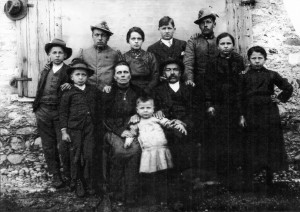
Back: Angelo, Domenico, Giovanna, Adeodato, Gelindo, Severina, Antonietta (Nina)
Front: Eugenio, Elena (mother), Giuseppe & Modesto (father)
There were six brothers and three sisters in their mother’s family. The Rossetto’s were against Mussolini and some of them got beaten up for voicing their opinion to the local Fascists. This was the reason that eight out of the nine Rossetto siblings migrated to Australia between 1926 and 1939. It was difficult to leave Italy in 1939 but after a few false starts, the Tormena family managed to emigrate to Australia. They arrived in Adelaide on 14th February 1940.
In June 1940 Italy entered the war against the allies and life for Italians living in Australia became difficult because they were considered “enemy aliens.” There were many restrictions; some Italians lost their jobs and some were interned. Galliano worked in a mica mine with his brother-in-law, Gelindo Rossetto. It was 1,7000 kilometres north of Adelaide in the Northern Territory. Severina worked in the city delivering milk and washing bed linen for several of the city boarding houses.
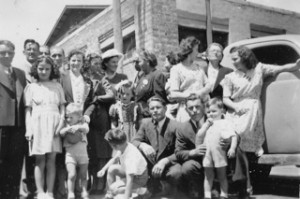
Johnny and Maria went to school at St Mary’s Franklin Street. There were many cousins to spend time with and their first visit to the beach was a memorable experience.
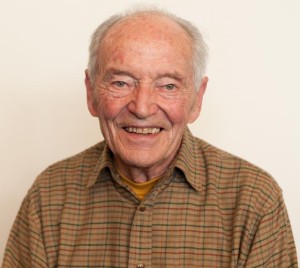
When Johnny was 16 years he began work as a cleaner in a cinema at night. Johnny working life was mainly in the area of retail and window dressing. He was employed at John Martin’s, a large Adelaide department store, for 28 years. He managed the window design in five different stores and had a staff of more than 70 people. He was respected for his knowledge and skills and part of his role was to study the design and promotion of fashion for new seasons in other countries. For example, he visited large stores and fashion exhibitions in Japan, Korea, USA, Israel, Denmark, Italy, France, Spain and London. On one business trip he was away for 11 weeks.
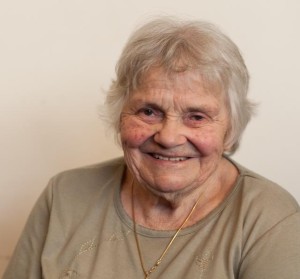
From childhood, Maria loved all sports. She liked sport more than her schoolwork. She was an excellent softball player and played for the state team in South Australia for several years. She coached the Sturt junior softball team for many years and later travelled to world championships in different countries. She travelled to play softball and always found it easy to find jobs when she returned from competitions. Maria co-founded the Sturt Softball Club which is now the largest in Australia and she is a life member. She was involved with softball for more 30 years. Maria travelled widely in Australia and other parts of the world.
Both Johnny and Maria have maintained strong ties with relatives and friends in Italy, Melbourne and Adelaide. They have travelled to Italy many times but agree that they love living in Adelaide.
You can listen to the interviews with Johnny and Maria or read the transcripts of their interviews on the website. Click here.
Madeleine Regan
15 November 2020
La famiglia Tormena
Johnny Tormena è nato il 29 novembre 1927 a Bigolino nella provincia di Treviso. Sua sorella, Maria Rosa è nata il 5 giugno 1933 anche a Bigolino. Bigolino è a 5 chilometri da Valdobbiadene, un paese che è a 50 minuti a Venezia prendendo l’autobus. A Bigolino molte famiglie lavoravano il terreno e coltivavano grano, mais, patate e uva.
Loro padre, Galliano, era un carrettiere. Aveva due cavalli e andava a prendere roba dalla stazione ferroviaria e la consegnava alle persone che avevano bottega nella zona vicino al comune. Loro madre, Severina Rossetto, lavorava in una fabbrica di bachi da seta, si chiama la filanda, e andava a piedi a Valdobbiadene per 5 chilometri.

Tutti quanti nella famiglia della madre i Rossetto c’erano sei fratelli e tre sorelle erano tutti quanti anti Fascisti. Per questo, usualmente venivano aggrediti quando esprimevano la loro opinione ai fascisti del luogo. Questa è stata la ragione perchè otto dei nove figli Rossetto emigrarono in Australia dal 1926 fino al 1939. Non era molto facile emigrare in Australia nel 1939 e dopo parecchi tentativi ci sono riusciti e arrivarono in Adelaide il 14 febbraio 1940.
Nel giugno 1940 l’Italia è entrata in guerra contro gli alleati e per gli Italiani in Australia era un tempo troppo difficile. C’erano molte restrizioni e alcune persone persero il lavoro e alcune sono state internate. Galliano ha lavorato in una miniera di mica con suo cognato, Gelindo Rossetto, nel Northern Territory, 1,700 chilometri nord di Adelaide. Severina ha lavorato nella città consegnando latte e lavando la biancheria da letto in parecchie pensioni.

Johnny e Maria hanno frequentato la scuola a St Mary’s Franklin Street. Avevano molti cugini con cui trascorrere il tempo e andare in spiaggia per la prima volta è stata un’ottima esperienza.
Galliano morì nel 1950 e Severina morì nel 1999.

Quando aveva 16 anni, Johnny lavorava nel cinema facendo pulizie. Johnny ha lavorato maggiormente nella vendita al dettaglio e per 28 anni è stato da John Martin, un grande negozio in Adelaide come vetrinista. Dopo un po’ stato promosso a un ruolo senior ed è stato responsabile per cinque negozi e oltre 70 membri di personale. Johnny ha viaggiato in vari paesi per il suo lavoro per conoscere il disegno e la promozione della moda per le stagioni. È andato per esempio in Giappone, USA, Israele, Danimarca, Italia, Francia e Spagna. Per un viaggio di lavoro è stato via per 11 settimane.
Fin dall’infanzia Maria amava molto lo sport. Le piaceva lo sport più dello studio.

Era un’ottima giocatrice di softball e giocava per la squadra di stato nel South Australia per diversi anni. Ha trovato facile cambiare lavoro che le ha permesso di viaggiare per il suo amore dello sport. Dopo essersi allenata per molti anni la squadra junior per Sturt Club. Maria è stata co-fondatrice del Sturt Softball Club che adesso è il più grande in Australia. Lei un membro a vita. Era coinvolta in quello sport per almeno 30 anni. Le piaceva viaggiare per i campionati mondiali di softball in diversi paesi. Maria anche viaggiato molto in Australia.
Entrambi Johnny e Maria hanno mantenuto forti legami con i loro parenti ed amici in Italia, Melbourne ed Adelaide. Hanno viaggiato in Italia molte volte ma sono d’accordo sul fatto che amano vivere in Adelaide.
Potete ascoltare le interviste con Johnny e Maria o leggere i trascritti sul website. Clica qui.
Madeleine Regan
15 November 2020
